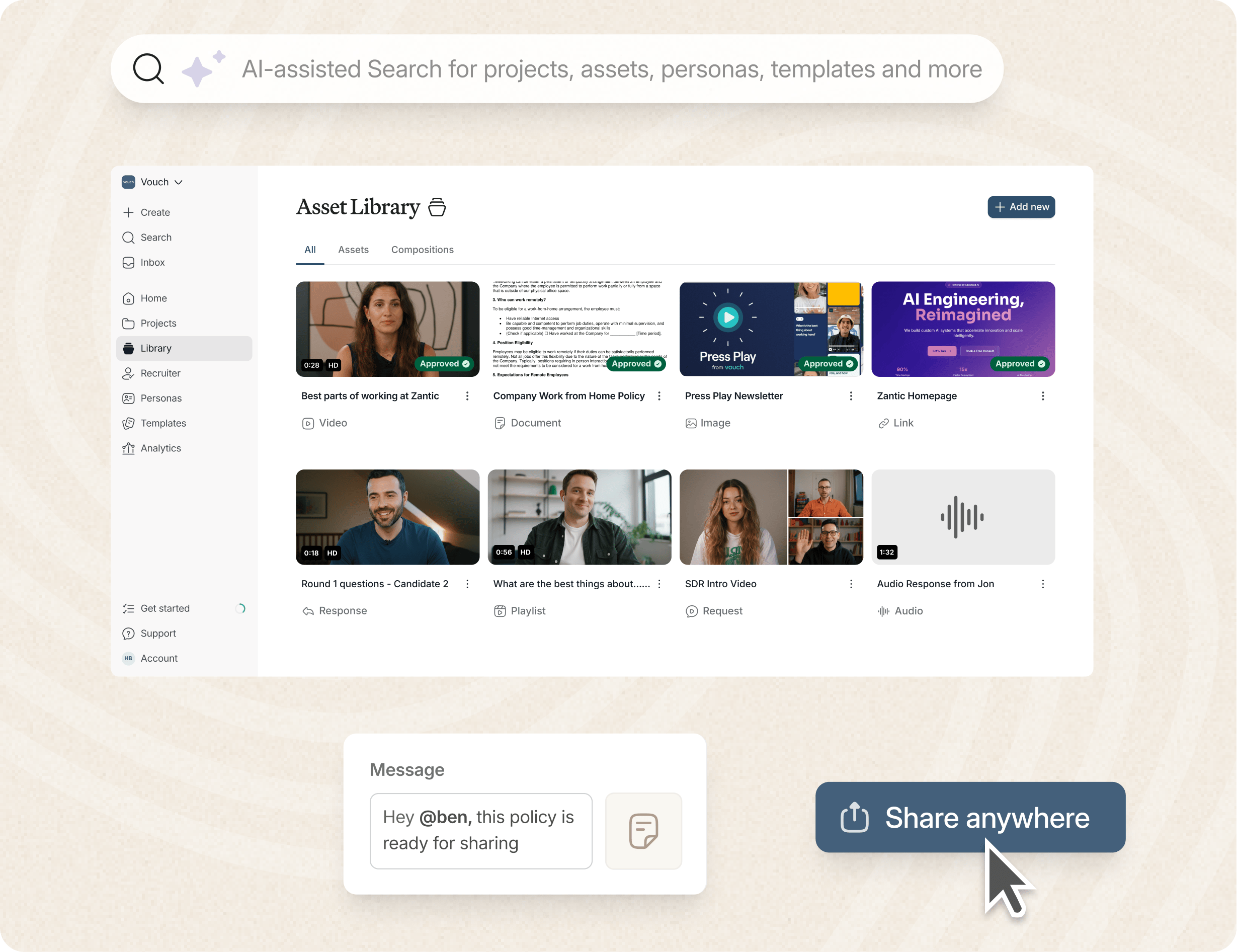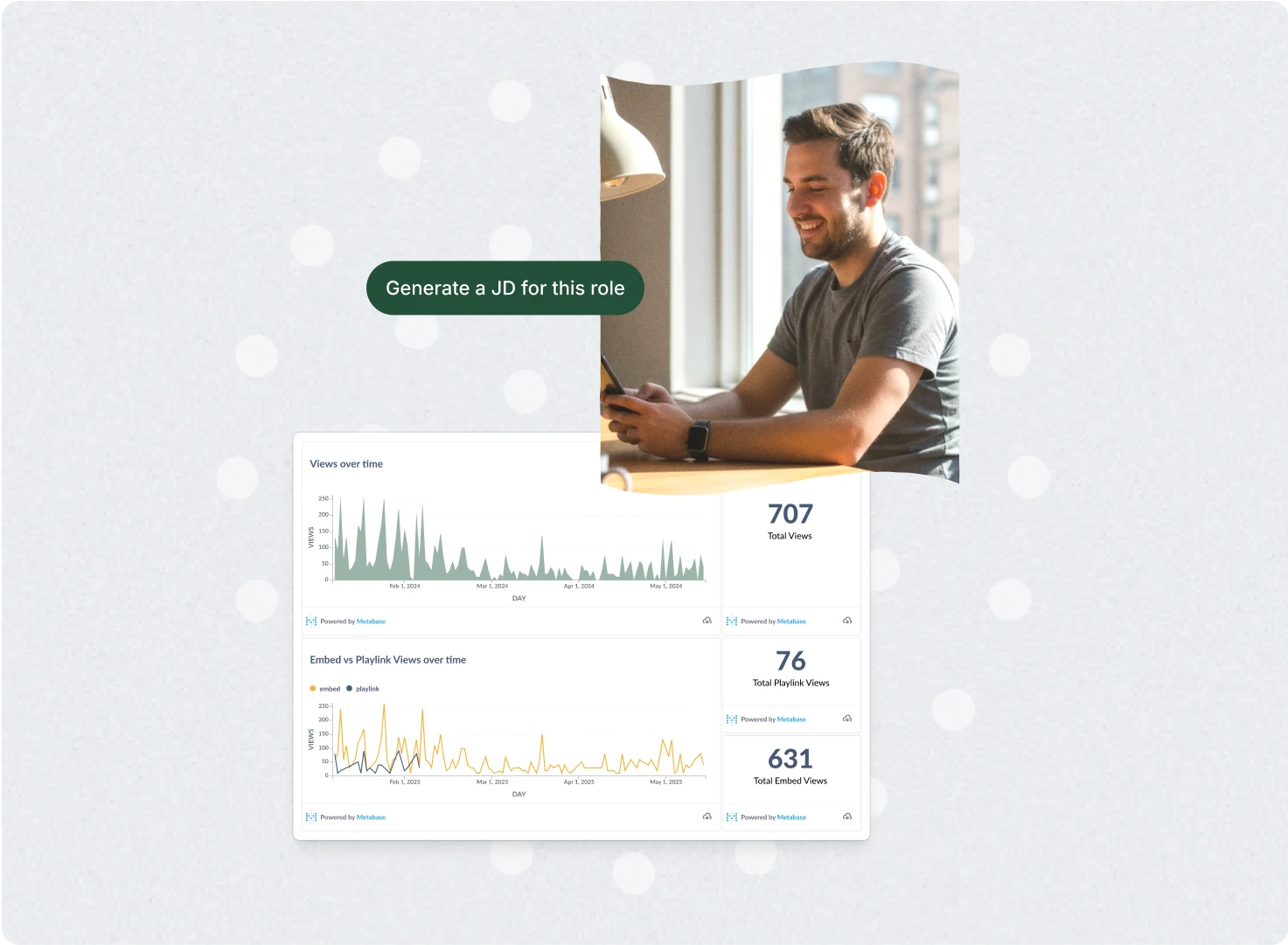The modern workforce is changing fast, and the term "contingent workforce" has become more common in today's 2026 economy.
But what exactly is a contingent worker, and how do they fit into your organization and your talent acquisition strategies?
In this guide, we'll break down everything you need to know - covering the basics, like how contingent workers differ from traditional employees, the legalities involved, and why the world's best businesses rely on them.
Let's dive in.
What Exactly Is a Contingent Worker?
A contingent worker refers to someone who works on a temporary, contract, or project basis rather than being employed as a permanent, full-time employee.
Contingent workers are often hired to complete specific tasks, fill seasonal fluctuations like in retail and hospitality, or address skill gaps within a company.
Key aspects of contingent workers include:
- They are not part of your regular workforce.
- They often work for a staffing agency or as independent contractors.
- They do not typically receive employee benefits like health insurance or retirement plans.
- A contract agreement defines their work or is project-specific.
Examples include freelance writers, graphic designers, construction workers, and gig workers like rideshare drivers.
The AI-enabled workspace for talent teams.
- Unified workspace for talent teams
- Accelerate hiring with AI tools
- Auto-generate polished hiring and employer brand content
- Easily repurpose assets across all channel

How Are Contingent Workers Different from Full-Time Employees?
Contingent workers and full-time employees have very different relationships with employers. For contingent workers:
- There is no ongoing employment relationship; they are hired on an as-needed basis.
- They are paid differently, often receiving non-employee compensation through forms like IRS Form 1099-MISC instead of a W-2. Please be sure to check your local country and all legislation; this is only an example of the differences.
- They do not receive company-provided benefits, such as health insurance or retirement plans.
- Their work is more flexible, often project-based, and lacks the job security that comes with permanent positions.
In contrast, full-time employees typically have a long-term commitment, a stable salary, and access to benefits like paid leave and retirement contributions.
Businesses often prefer contingent workers for short-term needs and cost savings - and full-time employees for ongoing roles and repeatable growth and deliverables.
What Are the Types of Contingent Workers?
The term "contingent worker" is an umbrella term that includes various types of non-permanent workers. Here are the main categories:
- Independent Contractors: These are self-employed professionals who often work under a contract agreement. Common examples include freelance writers, graphic designers, and consultants.
- Temporary Employees: These are workers hired for a short period through temp agencies or directly by businesses.
- Gig Workers: Individuals working through platforms like Uber, DoorDash, or TaskRabbit.
- Agency Contractors: Workers employed by a staffing company but assigned to work for a client organization.
- Seasonal Workers: Hired specifically for seasonal fluctuations like holiday sales or summer tourist seasons.
Why is the Contingent Workforce on the Rise?
The rise of the gig economy has made contingent work more appealing to both businesses and workers.
Here's why companies love contingent workers:
- Cost savings: They avoid paying for health insurance, retirement costs, or social security.
- Flexibility: Companies can scale their workforce during seasonal fluctuations or for specific projects.
- Specialized skills: Businesses can quickly fill skill gaps with highly qualified professionals who prefer to contract, usually after significant time in-house in a larger corporation.
And here's why workers are embracing contingent workforce roles:
- Freedom: Many contingent workers value the autonomy that comes with freelance or gig work, such as rideshare work.
- Potential for higher pay: Contingent workers can sometimes negotiate higher rates than regular employees.
Real Data and Predictions On Contingent Workforce Growth
Future Workforce Composition: It's estimated that by 2050, 50% of the U.S. workforce will be made up of freelance or contingent workers, indicating a significant shift towards flexible employment arrangements. PeopleScout
Company View Contingent Workforce Usage: 41% of companies plan to increase their use of contingent workers, reflecting a shift towards more flexible employment models. Conexis VMS Software
Global Financial Projections: The contingent workforce management market is projected to reach $465.2 billion by 2031, highlighting the growing economic significance of contingent labor. NexusCW
Immediate growth by 2028: The contingent workforce penetration rate is expected to grow by 30% by 2028, indicating a trend towards an increased reliance on contingent labor. Conexis VMS Software
These statistics illustrate the expanding role and significance of contingent work in the global labor market.
What Are the Benefits of Hiring Contingent Workers?
Hiring contingent workers comes with multiple advantages for businesses, including:
- Flexibility: Companies can quickly adjust workforce size to match changing needs, whether it's for short-term projects or peak seasons.
- Specialized Skills: Contingent workers bring in specialized skills that may not exist within the permanent workforce.
- Cost Savings: Businesses avoid expenses like health insurance, retirement costs, and training costs.
- Fresh Perspectives: Outsiders can offer new insights and help solve problems creatively.
- Focus on Core Goals: By outsourcing non-core activities, businesses can prioritize their business goals more effectively.
What Are the Legal Rights of Contingent Workers?
Although contingent workers lack the full benefits of regular employees, they still have certain rights under the law:
- Non-Discrimination Laws: They are protected from workplace discrimination based on gender, race, age, etc.
- Agency Worker Regulations: In some regions, these ensure fair pay and working conditions for agency temps.
- Occupational Safety Laws: Workers are entitled to a safe workplace, regardless of their employment status.
Employers must ensure compliance with these laws and provide appropriate Professional Liability and general liability insurance where applicable.
How Can Businesses Effectively Manage a Contingent Workforce?
Managing a contingent workforce requires structure and strategy. Here are a few tips:
- Define Your Workforce Needs: Determine which roles are best suited for contingent workers.
- Leverage Technology: Use integrated workforce management systems to track contracts, work hours, and contingent workforce spend. Tools like Vouch also make sourcing new contingent workers easier.
- Ensure Compliance: Stay updated on employment laws and worker classification rules.
- Streamline Onboarding: Create a smooth onboarding process to improve job performance and overall employee experience. Tools like Vouch are ideal for a smooth, repeatable onboarding process.
- Monitor Costs: Continuously track expenses related to contingent talent to ensure cost efficiency.
FAQs
What is a contingent worker?
A contingent worker is someone hired on a temporary, contract, or project-specific basis rather than as a permanent employee.
Do contingent workers receive benefits?
Typically, no. Contingent workers don't get company benefits like health insurance or retirement plans.
How are contingent workers paid?
In the U.S., they are often paid as independent contractors and report income on IRS Form 1099-MISC.
Which industries rely on contingent workers?
Industries like construction, healthcare, IT & tech, and retail frequently employ contingent workers.
What's the difference between contingent workers and full-time employees?
Contingent workers are temporary and project-based, while full-time employees have ongoing, stable employment relationships.
Can contingent workers become full-time employees?
Yes, some businesses transition contingent workers to permanent roles when it suits their needs.
How can businesses manage contingent workers effectively?
Through proper workforce management tools, compliance with employment laws, and streamlined onboarding processes.
With contingent workers becoming a significant part of today's workforce, understanding their role and value can help businesses achieve business agility and meet their business goals effectively.
Whether you're a worker looking for flexibility or a company looking for talent, this guide has everything you need to know.
Hire And Educate Your Contingent Workforce With Vouch!
Loved by companies like Canva, Nike, Cisco, HubSpot, Amazon, and more, tools like Vouch make hiring and managing contingent workers in your business easier.
Book a Vouch demo today and chat with a video content marketing expert about your business needs.
You might also like

Elevate Your Brand Today With Vouch
Discover how Vouch can accelerate talent acquisition while helping you stay on-brand.






